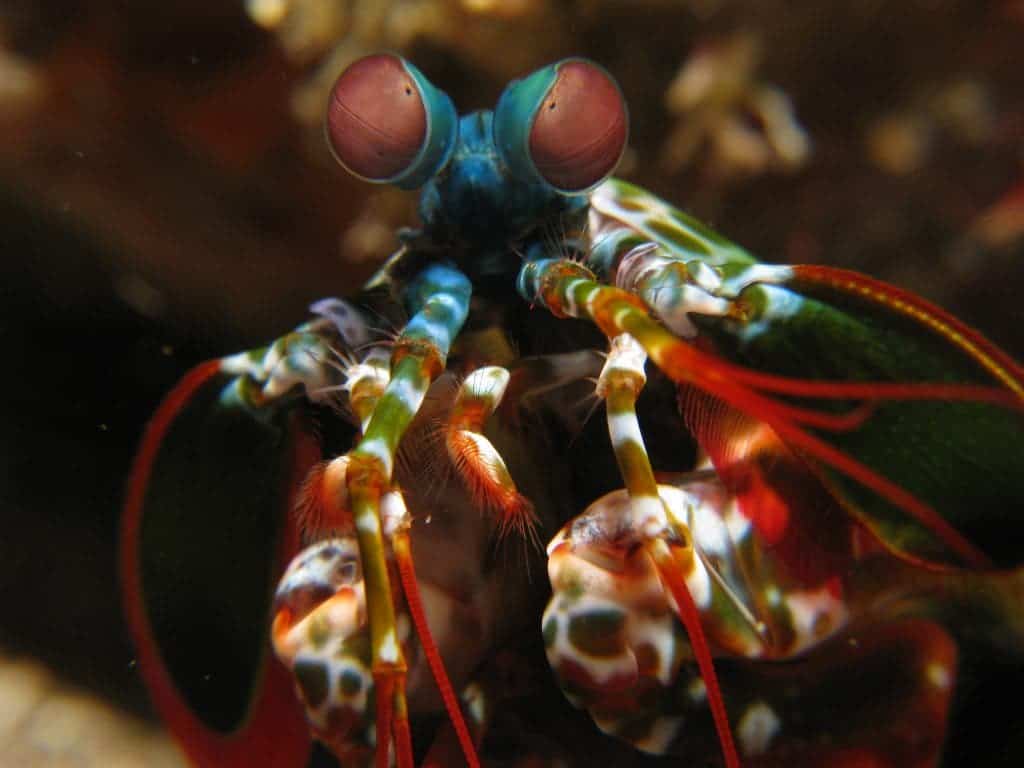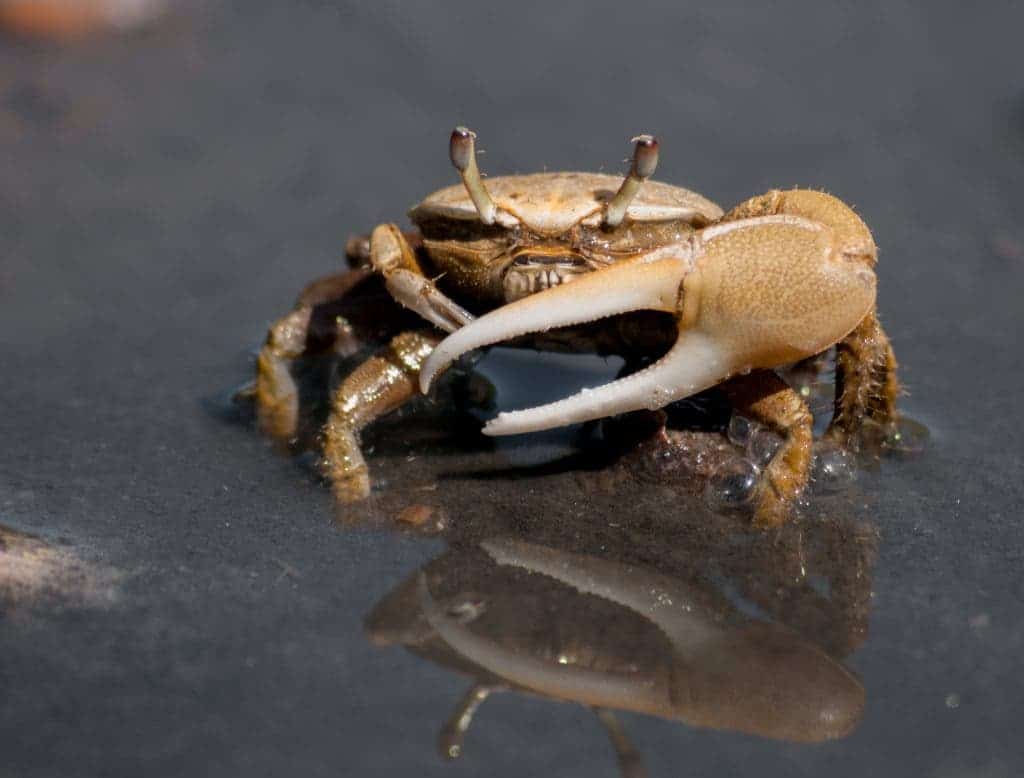An University of Queensland study of mantis shrimp discovered a new form of light communication employed by the animals, the findings having potential applications in satellite remote sensing, biomedical imaging, cancer detection, and computer data storage.
Dr Yakir Gagnon, Professor Justin Marshall and their colleagues at the Queensland Brain Institute previously found that mantis shrimp (Gonodactylaceus falcatus) can sense and reflect circular polarizing light, an ability extremely rare in nature. Until now, no-one has known what they use it for. The study follows up on that research and shows how shrimp use circular polarization to covertly communicate their presence to aggressive competitors.

Image via wikimedia
“In birds, colour is what we’re familiar with and in the ocean, reef fish display with colour – this is a form of communication we understand. What we’re now discovering is there’s a completely new language of communication,” said Professor Marshall.
Where linear polarized light travels in only one plane, circular polarized light travels in a clockwise or anti-clockwise spiral. The human eye can’t see polarized light, but special lenses — often found in sunglasses — make it visible. It’s also invisible to most other animals, and the shrimp use this to their advantage:
“We’ve determined that a mantis shrimp displays circular polarised patterns on its body, particularly on its legs, head and heavily armoured tail,” said Professor Marshall. “These are the regions most visible when it curls up during conflict.”
“These shrimps live in holes in the reef,” he added. “They like to hide away; they’re secretive and don’t like to be in the open.”
They are also “very violent”, Professor Marshall goes on to explain:
“They’re nasty animals. They’re called mantis shrimps because they have a pair of legs at the front used to catch their prey, but 40 times faster than the preying mantis. They can pack a punch like a .22 calibre bullet and can break aquarium glass. Other mantis shrimp know this and are very cautious on the reef.”
And this aggression is what the team used to test the animals. For the study, the researchers put a mantis shrimp in a water tank, providing them with two burrows they could chose from for shelter: one reflected unpolarised light and the other, circular polarized light. The shrimps made a beeline for the unpolarized burrow in 68% of tests, suggesting that they viewed the other hiding spot as being already occupied.
“If you essentially label holes with circular polarising light, by shining circular polarising light out of them, shrimps won’t go near it,” said Professor Marshall. “They know – or they think they know – there’s another shrimp there.
Cameras equipped with circular polarizing sensors, similar to the shrimp’s sensory organs, may detect cancer cells long before the human eye can see them.
“Cancerous cells do not reflect polarised light, in particular circular polarising light, in the same way as healthy cells,” he added.
But they’re not the only ones that see it
Professor Marshall also published another study in this number of the journal, showing that linear polarized light is used as a form of communication by fiddler crabs, Uca stenodactylus. They live on mudflats, a very reflective environment, and use the the amount of polarisation reflected by objects, the researchers found, to navigate through and react to their environment.
“It appears that fiddler crabs have evolved inbuilt sunglasses, in the same way as we use polarising sunglasses to reduce glare,” Professor Marshall said.

Image via wikimedia
Fiddler crabs react to ground-based objects based on how much polarized light they reflected, moving in either a forward mating stance, or retreating back into their holes, at varying speeds.
“These animals are dealing in a currency of polarisation that is completely invisible to humans,” Professor Marshall said. “It’s all part of this new story on the language of polarisation.”
Both the mantis shrimp study and the fiddler crab study are available online in the journal Current Biology.






